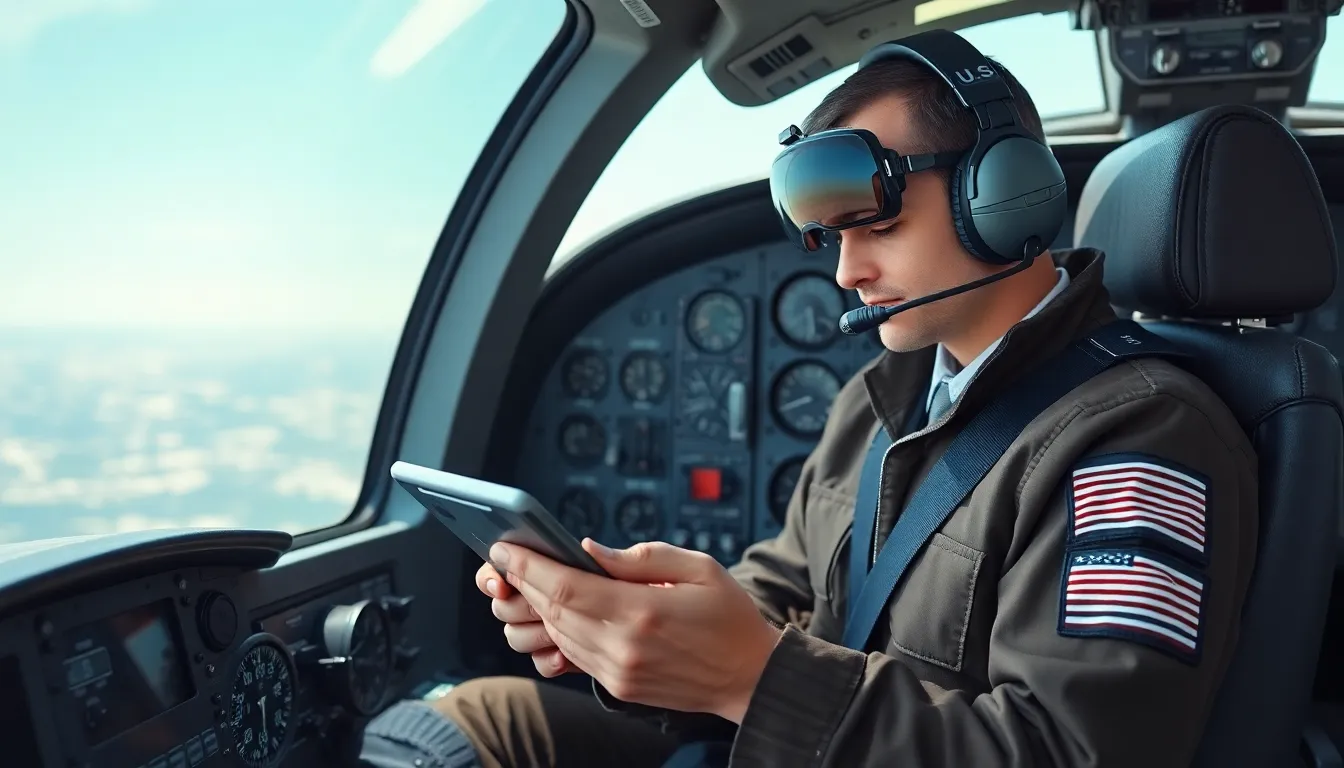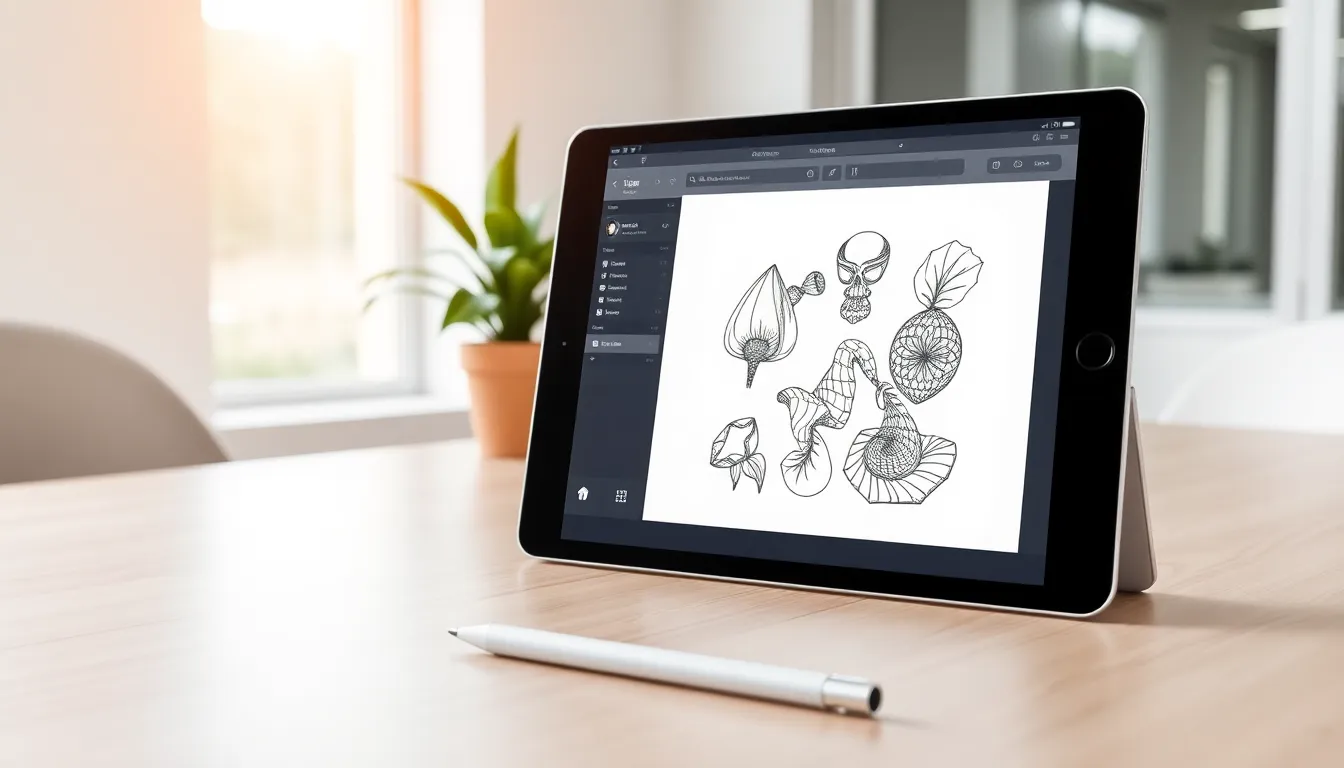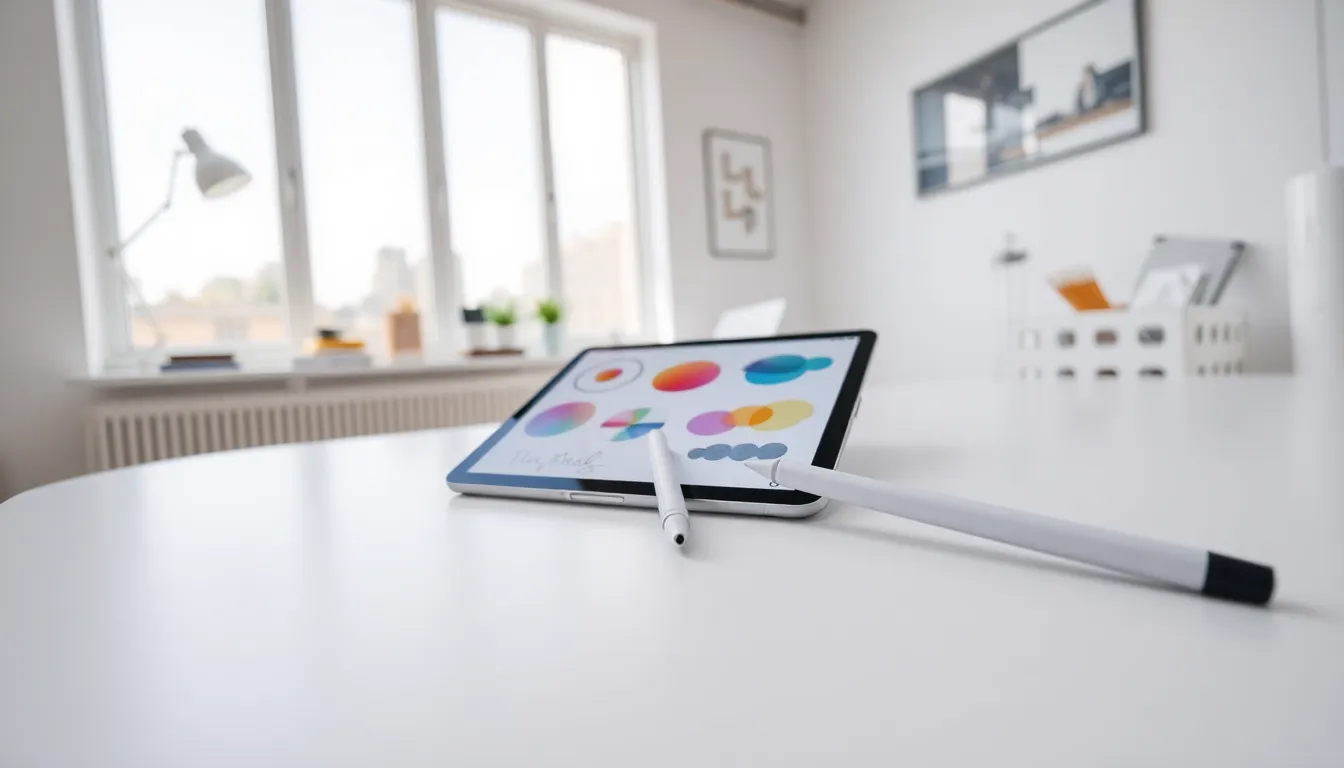In the fast-paced world of aviation, pilots need more than just a trusty flight manual and a pair of aviator sunglasses. Enter the tablet—a pilot’s new best friend that’s lighter than a feather and packed with more features than a Swiss Army knife. Imagine having flight plans, weather updates, and navigation tools all at your fingertips, without the weight of a brick-sized binder.
Table of Contents
ToggleOverview of Tablets for Pilots
Tablets now represent a significant advancement in pilot technology, enhancing both safety and efficiency. These devices come equipped with various applications that streamline pre-flight and in-flight tasks. Navigational charts, flight planning, and weather information can be accessed instantly.
Portability plays a crucial role; their lightweight design allows easy handling within the cockpit. Many models feature robust battery life, enabling extended use without frequent recharging. Data connectivity options, including Wi-Fi and cellular, provide real-time updates, which keep pilots informed about changing conditions.
Moreover, airlines and individual pilots often embrace specific tablet solutions tailored for aviation purposes. Applications such as ForeFlight and SkyDemon dominate the market, offering specialized tools for flight navigation and planning. Tablets also reduce the clutter of paperwork, which enhances organization in high-pressure environments.
User-friendly interfaces facilitate quick navigation through a plethora of information. Tablets allow pilots to customize settings, ensuring that critical data remains accessible. Integration with cockpit instruments enhances situational awareness, combining various flight data sources into a cohesive display.
Lastly, regular updates for aviation apps ensure that pilots maintain current knowledge of airspace regulations and hazards. As a result, utilizing tablets in aviation not only provides convenience but also elevates overall flight safety.
Key Features to Consider

When choosing a tablet for pilots, several key features significantly impact efficiency and safety. Understanding these aspects helps select the optimal device.
Display Quality
Display quality is vital for readability in various lighting conditions. High-resolution screens ensure clarity, making it easy for pilots to read charts and maps. A bright, glare-resistant display enhances visibility in sunlight, preventing squinting and eye strain. Multi-touch functionality enables quick gestures, expediting access to essential information. Tablets with adjustable brightness settings provide flexibility, allowing pilots to customize their screen clearly for day or night flying.
Battery Life
Battery life becomes crucial during long flights. A tablet that lasts at least 10 hours without needing a charge allows pilots to remain focused without interruptions. Devices with energy-efficient processors maximize usage time, providing reliability throughout the flight. Quick-charging capabilities help minimize downtime, ensuring the tablet is ready when needed. Some models even feature power-saving modes, extending battery life during critical moments.
Operating System
Operating system choice affects app availability and user experience. Android and iOS platforms dominate the market, each offering unique advantages. iOS is known for stability and a robust suite of aviation apps, while Android provides flexibility and customization options. Compatibility with existing tools and systems determines the overall efficiency of a tablet in a cockpit environment. Choosing an operating system that aligns with specific needs helps streamline operations and enhance overall functionality.
Popular Tablet Models for Pilots
Several tablet models cater specifically to the needs of pilots, enhancing their ability to operate efficiently and safely in the cockpit.
Model A: Features and Specifications
The iPad Pro ranks highly among pilots for its superior display quality and robust performance. With a Liquid Retina display, this model offers excellent visibility, even in bright sunlight. Battery life exceeds 10 hours, making it suitable for long-haul flights. Weight remains light, contributing to easy handling. The device supports multitasking and has access to a vast array of aviation applications. Pilots appreciate the strong connectivity options, allowing real-time updates on weather and navigation. A fast processor ensures smooth performance, crucial during busy flight operations.
Model B: Features and Specifications
The Samsung Galaxy Tab S8 also appeals to pilots due to its versatility and advanced features. Equipped with an AMOLED display, this model enhances screen clarity for detailed maps and charts. Battery longevity reaches up to 14 hours, providing ample usage time without frequent recharging. Ergonomics factor prominently, with its slim design allowing for convenient stowage in flight bags. A variety of aviation-specific apps are available on the Android platform. Additionally, built-in S Pen functionality enables quick note-taking and annotations on flight plans. Excellent connectivity options ensure continual access to necessary data and updates in-flight.
Benefits of Using Tablets in Aviation
Tablets enhance efficiency for pilots by providing essential information at their fingertips. Quick access to flight plans, navigation data, and weather updates improves responsiveness in critical situations. Pilots benefit from the lightweight design, reducing the physical strain of carrying traditional manuals.
Portability factors into many pilots’ decision-making, as tablets can easily fit into cockpit spaces. Real-time data connectivity keeps flight crews informed about dynamic weather changes, ensuring safety. User-friendly interfaces on aviation-specific applications promote swift navigation, minimizing distractions in the cockpit.
Streamlining operations becomes straightforward with the right tablet. For example, major applications like ForeFlight and SkyDemon allow for easy organization of flight documentation, reducing clutter during flights. Enhanced situational awareness results from integrating tablets with cockpit instruments, providing crucial information in a concise format.
Regular updates to aviation applications keep pilots abreast of airspace regulations and hazards. Improved safety metrics emerge when pilots utilize these tools, highlighting the growing importance of technology in aviation. Tablets with high-resolution screens ensure readability even in challenging lighting conditions, allowing pilots to stay focused.
Staying connected remains essential, especially during long flights. Many tablets have battery life exceeding 10 hours, crucial for extended operations. Quick-charging capabilities also prove advantageous, allowing for minimal downtime during busy schedules.
Tablets represent a technological evolution in aviation, enhancing operational efficiency, ensuring safety, and simplifying pilot responsibilities. Optimizing the flying experience becomes achievable, transforming how pilots approach their responsibilities in the cockpit.
Challenges and Considerations
Selecting a tablet for pilots involves various challenges and considerations. One significant factor is usability in extreme environmental conditions. Tablets must remain functional in both bright sunlight and low-light scenarios. Additionally, pilots face concerns about the durability of their devices. With high vibration and potential turbulence in mind, a ruggedized tablet design provides the necessary assurance.
Security concerns also play a critical role in the decision-making process. The protection of sensitive flight data remains paramount. Implementing encryption and secure password features enhances data security for pilots, minimizing the risk of unauthorized access.
Battery life presents another challenge. Pilots require a device that lasts throughout lengthy flights, ideally exceeding 10 hours. Quick charging capabilities further optimize operational efficiency during busy travel schedules.
Compatibility with aviation software frequently arises as a key consideration. Pilots must ensure their tablet supports crucial aviation applications seamlessly. The choice of operating system impacts app availability, with iOS recognized for stability and extensive aviation application options, while Android offers more flexibility.
Weight and portability are essential attributes for any cockpit tool. Lightweight tablets enhance the ease of handling during pre-flight checks. Moreover, the ability to stow devices securely contributes to overall cockpit organization.
Lastly, cost considerations influence tablet selection. Pilots must balance budget constraints with the need for advanced features. Investing in high-quality equipment often translates to improved reliability and performance during flights.
Navigating these challenges enables pilots to make informed decisions when selecting tablets tailored to their specific operational demands.
Tablets have undeniably transformed the aviation landscape for pilots. Their ability to provide instant access to crucial information enhances both efficiency and safety in the cockpit. With features tailored specifically for aviation needs, these devices streamline operations while reducing physical strain on pilots.
As technology continues to evolve, the integration of tablets into flight operations is likely to expand further. By understanding the key features and considerations when selecting a tablet, pilots can make informed choices that align with their unique requirements. Ultimately, embracing this technological advancement not only simplifies pilot responsibilities but also elevates the overall flying experience.






